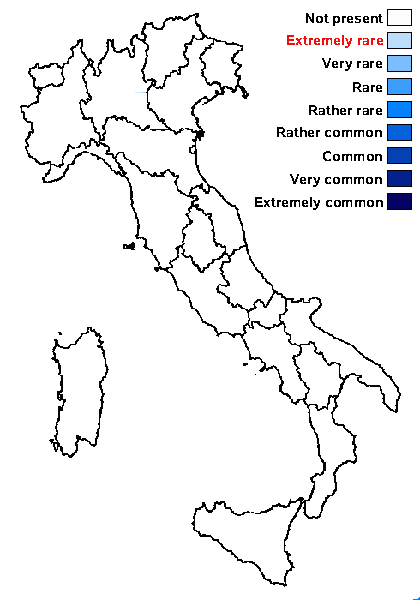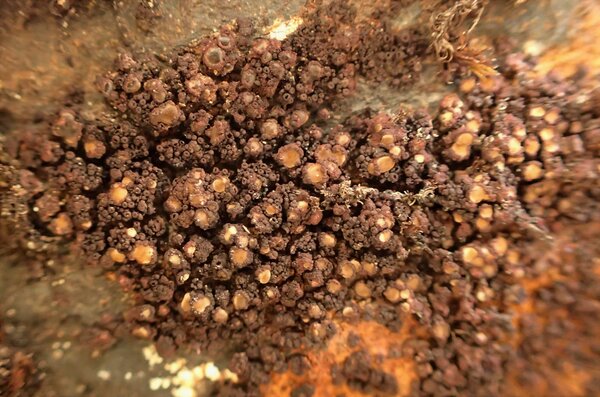Santessoniella arctophila (Th. Fr.) Henssen
Symb. Bot. Upsal., 32, 1: 80, 1997. Basionym: Pannaria arctophila Th. Fr. - Bot. Notiser: 8, 1863
Synonyms:
Distribution:
Description: Thallus crustose, episubstratic, subgelatinous when wet, granulose, the granules sometimes aggregated and/or elongate, up to 0.3 mm in diam., grey-brown to dark brown. Cortex 8-16 µm thick, usually of a single layer of cells; internal hyphae forming a reticulate pattern around the clusters of photobiont cells. Apothecia common, biatorine, 0.3-1(-2) mm across, with a convex, orange-brown disc and a paler, smooth, often finally excluded proper margin. Epithecium brownish; hymenium colourless, hemiamyloid; hypothecium colourless. Asci 8-spored, with internal amyloid ring-shaped structures. Ascospores 1-celled, hyaline, ellipsoid, 15-25 x 6-12 µm, with a slightly warted exospore. Pycnidia rare, wart-like, brown-black, the conidiophores short-celled. Conidia pleurogenous, bacilliform, 4-5 x c. 1 µm. Photobiont cyanobacterial (Nostoc, the cells in clusters). Spot tests: thallus K-, C-, KC-, P-, UV-. Chemistry: without lichen substances. Note: an arctic-alpine species growing on slightly calcareous soil and plant debris in snow-bed communities, most frequent in the Arctic zone but also found in the Alps (Switzerland), where it may have been overlooked. The generic position is still unsettled. To be looked for in the Italian Alps.
Growth form: Crustose
Substrata: soil, terricolous mosses, and plant debris
Photobiont: green algae other than Trentepohlia (primary); cyanobacteria, filamentous (e.g. Nostoc, Scytonema) (secundary, e.g. in cephalodia)
Reproductive strategy: mainly sexual

Predictive model
Growth form: Crustose
Substrata: soil, terricolous mosses, and plant debris
Photobiont: green algae other than Trentepohlia (primary); cyanobacteria, filamentous (e.g. Nostoc, Scytonema) (secundary, e.g. in cephalodia)
Reproductive strategy: mainly sexual

Predictive model



